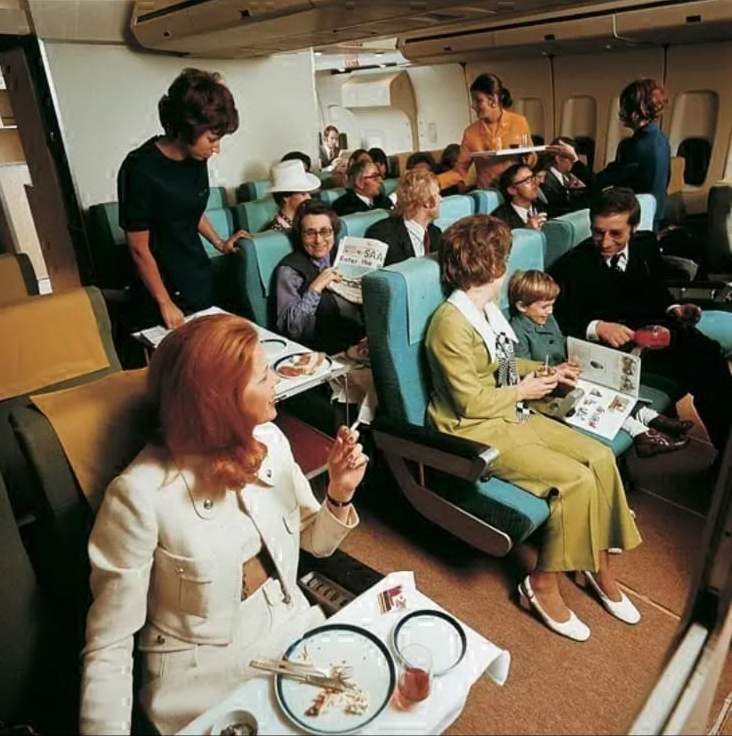Below is a small collection of statements which encourage us very much in the CanAm project:
I find the idea of a non-stop flight between the Canary Islands and the USA exciting. As I plan to move to the Canary Islands in the foreseeable future while running a business in the USA, I would fly to the Canary Islands and back once or twice a year from Dallas-Fort Worth Metroplex or LA.
The connections with a stopover in Spain mean that I lose valuable time for business activities or leisure. A non-stop flight would save me up to three days of travel. Personally, I am more interested in a comfortable, relaxing flight than a cheap connection.
R.D., Dallas Fort Worth

…just flying low-cost on parallel routes in effect leads to what we have today.
The market is ripe for a bit of disruption, to say the least.
Good luck with your quest.
GvD, Fort Lauderdale

Economy class of the Boeing 747 in the 1970s
Air travel in the 1950s–70s was a far cry from today, marked by luxury and exclusivity. It was largely accessible to the wealthy, with passengers and crew dressing formally, and airline uniforms often designed by fashion icons like Dior and Chanel. Stewardesses, typically unmarried and selected for their appearance, added to the glamorous atmosphere.
The in-flight experience offered unmatched comfort: spacious lounges for socializing, fully reclining seats, and indulgent meals served on real china, including lobster and champagne. Some planes even featured piano lounges, like American Airlines’ 747s. Security was minimal, smoking was allowed throughout the cabin, and passengers could arrive shortly before departure without ID checks.
Yet, this era had its downsides. Planes were less safe, turbulence was rougher, and entertainment options were limited to books, card games, or occasional visits from the captain. Despite the glamour, air travel then was exclusive, less convenient, and carried higher risks.
Sources: Huffington Post, Business Insider, Smithsononian Air and Space Museum, Washington Street Journal and Archdaily.